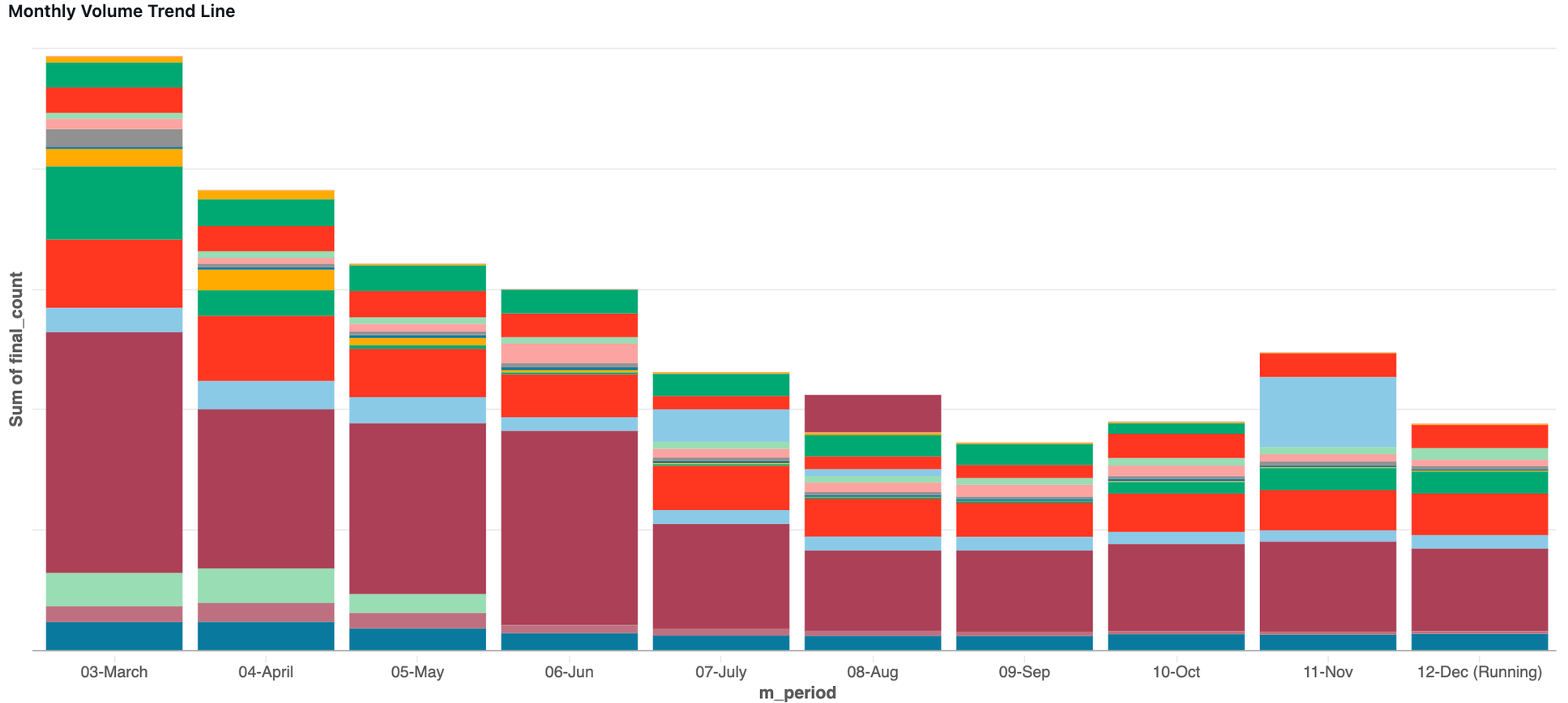In the fast-paced world of fintech, communication is the lifeline between you and your customers. Whether it’s an SMS confirming a transaction, a WhatsApp notification reminding users to pay their bills, or a push notification for those sweet cashback offers, effective communication builds trust. But as we scaled, so did our costs, and soon our communication expenses looked more like a luxury yacht budget than a fintech operational cost.
Faced with skyrocketing bills and a dashboard that didn’t quite add up, we embarked on a mission: slash costs, optimize processes, and maintain stellar engagement.
But why should engineering do it?
At our organization, engineers are not just coders; they are builders, architects of systems, and problem-solvers. Engineering here is about more than writing code—it’s about designing and refining processes to tackle challenges head-on. When faced with the growing issue of communication costs, we realized it wasn’t just a financial problem—it was an engineering challenge.
Engineering thrives in complexity, and optimizing communication costs required a deep understanding of data, tools, and workflows. Most of the engineering work we do revolves around identifying inefficiencies, implementing robust processes, and delivering scalable solutions. This philosophy is what drove us to take full ownership of the problem and craft solutions that would have a lasting impact.
Let’s first understand different modes of communications and their pricing strategies.
In India, SMS remains a vital communication channel for businesses, but rising costs and regulatory challenges make it increasingly difficult to manage. With businesses typically paying 10–15 paise per SMS. Despite these challenges, SMS continues to excel in delivering OTPs and time-sensitive notifications due to its high reach and reliability.
WhatsApp Business, while initially more expensive—at around 12 paise for transactional messages and 78 paise for promotional messages—offers a richer, interactive experience with higher engagement rates. Its capabilities, such as multimedia support and personalized messaging, make it a compelling alternative for businesses aiming to build stronger customer connections.
Push notifications, which are free or extremely low-cost, excel at delivering short, actionable messages directly to users via apps or websites, though their effectiveness depends on user app adoption and notification permissions.
Meanwhile, email provides a nearly cost-free solution for non-urgent, detailed communication, such as newsletters or promotional updates, offering scalability and robust tracking tools.
Act 1: Gather and Analyse Data
Our first move was to review the data meticulously. We broke down the costs by channel—SMS, WhatsApp, Push Notifications, Email, and Robocalls—and mapped out every message’s role in the user journey. This helped us identify touchpoints that were either redundant or unnecessary.
Action 1.1: Remove Redundant Messages
We found that several messages, while well-intentioned, added little value to the user experience. For example:
- Duplicate updates sent across multiple channels.
- Over-communicating minor account changes (e.g., low-value transactions).
- Reminder messages sent too frequently.
By auditing and pruning these unnecessary communications, we reduced our total message volume significantly.
This exercise alone saved us around 10% of our total communication costs, without any noticeable drop in user engagement or satisfaction. In fact, streamlining the journey improved the user experience by reducing notification fatigue.

Act 2: Fixing SMS – The Silent Drain
SMS was one of our biggest cost drivers, quietly eating away at our budget. Armed with our newfound insights, we attacked this problem with precision.
Action 2.1: Control Message Length
- Messages exceeding 160 characters were being split into multiple segments, doubling or tripling costs.
- We implemented a template approval process in our CRM (Internal tool to manage and create templates), flagging any SMS longer than 160 characters for review and revision.
Action 2.2: Beware the Unicode Trap
- Unicode characters (like emojis) were significantly inflating costs. A single emoji could turn a one-part message into two.
- We restricted the use of emojis and symbols in SMS, saving them for only the most critical touchpoints.
Action 2.3: Smarter Categorization
- Vendors offered cheaper rates for transactional messages compared to promotional ones. Misclassified messages were costing us dearly.
- By properly tagging SMS templates, we ensured we were always paying the lowest applicable rate.
Result: These optimizations reduced SMS costs by an impressive 20-30%.
Act 3: WhatsApp – The Budget Buster
WhatsApp was a game-changer for user engagement but came with a hefty price tag. Every message sent was charged based on its category (e.g., transactional vs. promotional). Here’s how we optimized it:
Action 3.1: Categorize Templates Correctly
We audited every WhatsApp message template to ensure they were registered under the most cost-effective categories. Transactional messages had previously been filed under marketing categories—an expensive mistake.
Action 3.2: Cache Read Status
Why send follow-up messages to users who have already read the first notification? Or why send communication to someone who hasn’t been engaging with them for a while? To address this, we built a read-status cache to avoid redundant messaging.
Action 3.2: Accountability Metrics
WhatsApp’s ability to drive engagement and improve marketing KPIs, such as click-through rates and conversion rates, is undeniable. For example, by sending more WhatsApp communications, we saw a notable increase in total payment volume (TPV) as customers responded more promptly to transactional and promotional messages. However, this success came at a cost. Each additional message, even when effective, added to the financial burden, challenging the sustainability of this channel for long-term use.
Result: WhatsApp costs dropped by an impressive 65%, while maintaining the same level of engagement.
Act 4: Building Intelligent Communication with Pigeon
With SMS, WhatsApp, and other channels incurring significant costs, we decided to build an in-house service called Pigeon. This service not only optimized communication routing but also introduced intelligence to how we engage users across channels.
How Pigeon Works
- Static Routing Based on Categories and Length:
- Pigeon routes SMS and WhatsApp messages intelligently, considering message type (e.g., promotional or transactional) and length to ensure cost-efficiency.
- Intelligent Communication:
- Before sending high-cost messages like SMS or WhatsApp, Pigeon first attempts cost-effective channels such as push notifications or emails.
- If users don’t engage with these cheaper options within a predefined timeframe, only then are the expensive channels triggered.
Results from Pigeon
By adopting this layered and intelligent communication strategy, Pigeon helped us:
- Dramatically reduce costs across all channels.
- Improve user engagement by ensuring they weren’t overwhelmed with redundant or expensive notifications.
- Maintain flexibility to experiment with and integrate new channels.
Act 5: Work with Vendors —The Art of the Deal
Armed with our dashboard data, we approached our vendors to renegotiate contracts.
Tactics
- Price Comparisons: By benchmarking vendors against each other, we secured better deals.
- Volume Discounts: We committed to higher message volumes in exchange for lower per-message costs.
- Multiple Vendors: Diversifying vendors gave us leverage, ensuring no single vendor could dictate prices.
Vendor Bill Discrepancies
While analysing our vendor bills, we noticed discrepancies between the dashboards and vendor invoices, though the delta was small. While we won’t dive into the specifics of why this occurred or the settlement details, this taught us an important lesson: never fully trust the bills, even if the delta is as small as 5-10%.
Result: Across the board, vendor costs decreased, further reducing our communication expenses. Bill accuracy improved, saving an additional 5-10% on communication costs.
The Results

After months of effort, we observed a significant overall cost reduction of 50-60%. While part of this was due to a shift in business focus, the remainder was achieved through our strategic optimisations. We didn’t just save money; we also improved how we communicated with users. By emphasising relevance, clarity, and efficiency, we maintained user satisfaction while spending significantly less.
Lessons Learned
- Data Is Key: Without a clear dashboard, we couldn’t have identified inefficiencies.
- Less Is More: Streamlining messages ensured we focused on quality, not quantity.
- Vendor Negotiation Matters: Leverage your data to negotiate better deals.
- Build Smarter Tools: Pigeon became a game-changer in intelligent communication.
Optimising communication costs isn’t just about cutting back; it’s about doing more with less. And maybe, just maybe, keeping a pigeon or two on standby for emergencies. 🐦
